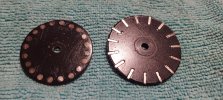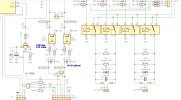a33
Specialised Contributor
- Joined
- Sep 24, 2009
- Messages
- 1,332
- Reaction score
- 759
- Points
- 113
- Age
- 64
- My Satellite Setup
-
XSAT410
Rebox RE-9000
- My Location
- The Netherlands
So it looks like you are referring to your own modification, not the one that was in the post that I linked.The reasoning is that the Crydom is self contained with Schmitt trigger and zero crossing switching.
I guess a schmitt trigger could indeed help with miss-counts? Otherwise an Solid State Relay would be a rather 'heavy' solution for just a pulses circuit, I would think; an opto-coupler (for low amperage) would be enough?
I don't see that it would allow extra voltage control. With just one opto-coupler, you still need the 5V and ground for the diode (two terminals), and the pulse (and ground) (one extra terminal) for the pulse. The Pulse-circuit in the V-box then can be at any voltage you like.I guess one other reasoning of using a stand alone SSR with opto is that it allows you to control your own voltage out to the actuator over cable.
Noise, impedance, reactance. The internal opto depends of its own voltage and current and getting that out to the actuator and back at a low voltage.
But you are saying that having the pulse/ground-circuit in the V-box itself, is much better than having it over the Pulse/ground circuit over the (long) cable? Thus maybe reducing the effect of induced impulses over the cable a bit?
Has somebody ever tried, with just one opto-coupler?
Greetz,
A33


